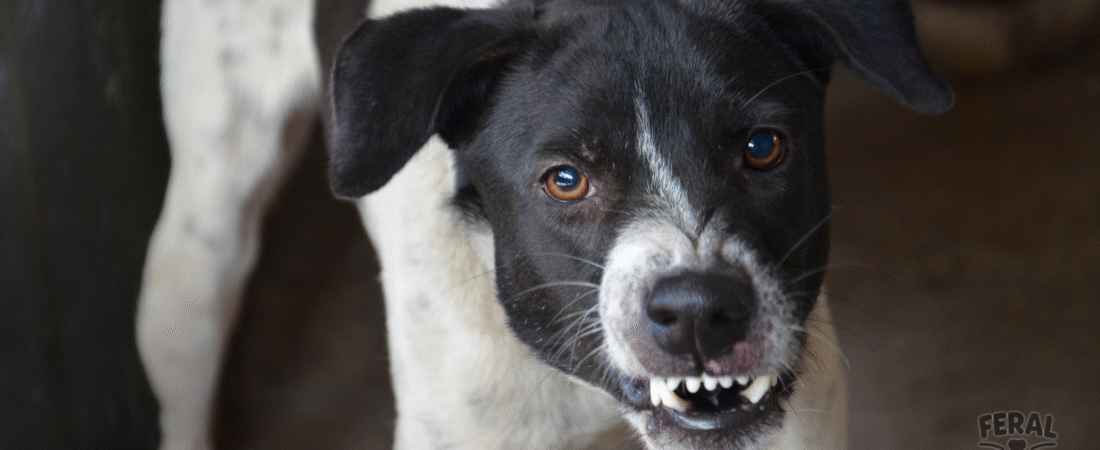Why Rabies Is So Serious

Rabies is one of the oldest and deadliest viral diseases known to humans and animals. Once symptoms appear, rabies is almost always fatal. The virus attacks the nervous system, causing severe brain inflammation.
For dogs, the risk is real — especially in areas where stray dog populations, bats, and wildlife reservoirs exist. For humans, rabies is zoonotic (transmissible from animals to people), which makes prevention in dogs a matter of both pet safety and public health.
How Rabies Spreads
Rabies is spread through the saliva of infected animals, most often through bites.
Ways it can transmit include:
- Bites from rabid dogs, cats, bats, raccoons, or other mammals.
- Saliva entering broken skin or mucous membranes (eyes, mouth).
- Contact with wild animals.
The rabies virus does not survive long in open air, on clothing, or dry surfaces — it needs body fluids to stay infectious.
Symptoms of Rabies in Dogs
Rabies symptoms typically appear 2 weeks to several months after exposure. They progress quickly once signs start showing.
Early symptoms may include:
- Fever, restlessness, decreased appetite
- Personality changes (sudden shyness or aggression)
- Excessive drooling
As the disease progresses:
- “Furious” rabies: sudden aggression, biting at objects, anxious pacing, disorientation, attacking people or animals.
- “Paralytic” rabies: gradual paralysis, inability to swallow (“foaming at the mouth”), weak bark, eventually full body paralysis.
Both forms lead to seizures, respiratory failure, and death.
Diagnosis and Treatment
- Rabies cannot be confirmed in a living dog with simple tests; diagnosis is usually based on history of exposure + signs.
- Sadly, there is no treatment or cure once symptoms start. Rabies is nearly 100% fatal.
- Dogs showing signs must be quarantined according to local laws and reported to public health authorities.
This is why prevention is everything.
Isolation and Public Safety
If a dog is suspected of rabies, it is a serious public health emergency.
What happens:
- The dog is quarantined (10 days or longer depending on local rules).
- Anyone bitten must seek immediate post-exposure vaccination.
- Strict precautions are taken to avoid saliva exposure.
Preventing Rabies in Dogs
Rabies prevention is both simple and highly effective.
- Rabies Vaccination:
- Puppies should get their first rabies vaccine at 12–16 weeks of age.
- A booster at 1 year, then every 1–3 years depending on country/state laws.
- Limit wildlife exposure: Keep dogs away from bats, raccoons, foxes, or stray animals.
- Leash laws and supervision: Reduces risk of wandering and fights.
- After possible exposure: If your vaccinated dog is bitten by a suspect animal, seek a vet immediately — boosters can save lives if given promptly.
Mortality and Why Prevention Is Better Than Cure
- Once clinical symptoms appear, rabies is almost always fatal.
- Because of this, no medication can help once the disease has started.
- Vaccination is not just recommended — in most areas it’s required by law because of the risk to humans.
In some developing regions where vaccination is inconsistent, rabies is still a leading cause of human deaths after dog bites. Preventing it in pets directly protects entire communities.
Caring for a Rabies Survivor?
Here’s the hard truth: there is no such thing as a rabies survivor once symptoms are visible. Dogs either never develop it because they were vaccinated, or they succumb to the disease. This makes rabies very different from parvo or distemper, where recovery is possible.
So the focus must always remain on:
- Consistent vaccination
- Responsible ownership
- Educating others about the risks
Facts About Rabies
- Rabies has been recorded for over 4,000 years — ancient texts mention “mad dogs.”
- Bats are the most common carriers in many countries, not dogs.
- Louis Pasteur developed the first rabies vaccine in the 1880s.
- Rabies is one of the few diseases with a human vaccine that works after exposure — but only if given before symptoms.
Common Questions from Fur Parents
Can my vaccinated dog still get rabies?
It is extremely rare. Modern vaccines are very effective if boosters are kept up to date.
What if my vaccinated dog bites someone?
Usually, local laws require a 10-day observation period, even if vaccinated, to ensure no symptoms appear.
Can I get rabies from touching a rabid dog’s saliva on my skin?
Only if you have open cuts or wounds. Healthy skin blocks the virus.
Is rabies common in the U.S. and Europe?
Thanks to vaccination programs, canine rabies has been almost eliminated in North America and much of Europe, but bat exposure remains a concern. In Asia and Africa, rabies from dog bites remains a big issue.
Final Takeaway
Rabies is one of the deadliest diseases in the world — for dogs and people. Once symptoms appear, there is almost no chance of survival. But the good news is that rabies is completely preventable.
Vaccinating your dog, practicing good supervision, and taking care after possible wildlife exposure keeps your pup and your family safe. In the battle against rabies, prevention isn’t just better than cure — it’s the only cure.

